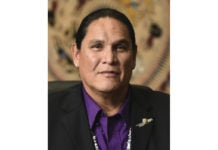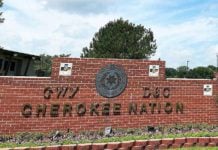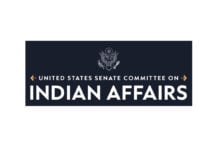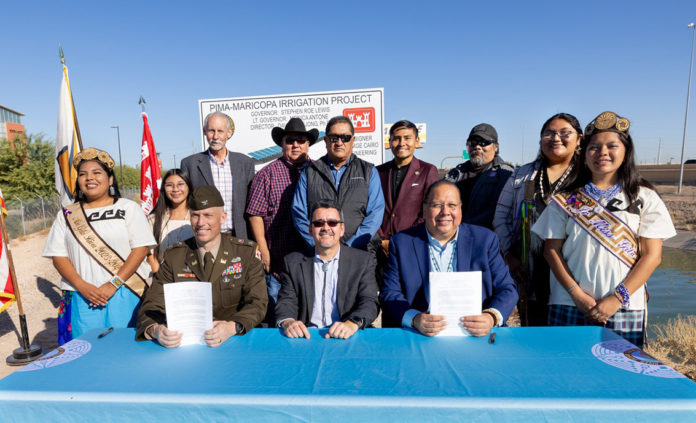SACATON, AZ – The Gila River Indian Community and the U.S. Army Corps of Engineers recently signed a Project Partnership Agreement to begin construction on phase one of the Pima-Maricopa Irrigation Renewal Energy Pilot Project. The agreement starts the first phase of the solar-over-canal project within the community and will involve construction of solar panels over a portion of the community’s 1-10 Level Top canal to conserve water and generate renewable energy for tribal irrigation facilities. The overall project is the result of an effort by the Biden administration to support new, innovative solutions to the drought crisis threatening the Colorado River Basin, with support from the Bureau of Reclamation and Congress as well.
The historic agreement represents the first solar-over-canal project of its kind in the United States to initiate construction. The cost of phase one of the project is estimated to be $6.744 million and is expected to produce approximately 1 MW of renewable energy to offset energy needs and costs for tribal farmers. Funding for the project comes from the federal-tribal partnership, with support for the tribal portion of cost being provided by the Bureau of Reclamation in the form of a $517,000 grant, which the community used to produce the design that will be used to construct the project. With the execution of the historic agreement, the Army Corps will now begin the actual construction phase of the project, with completion expected in 2025.
The first phase of the pilot project will cover approximately 1,000 ft. of canal and will show the feasibility of the concept with the goal of expanding the solar-over-canal project to include additional miles of the community’s irrigation system, which is one of the most comprehensive irrigation systems in the state. The community has already begun feasibility and design efforts for phase two of its overall plan for the project, with funding being provided in part by the Bonneville Environmental Fund, once again demonstrating the broad support for this innovative approach in addressing the drought crisis, while also attacking the root cause of the crisis with renewable energy to move toward a new “Blue-Green Tribal Agricultural Economy.” Funding for phase two of the project is expected from the Bureau of Reclamation, which is implementing a grant program established by Congress for a pilot program to further develop this innovative technology.
“This first pilot will break new ground and further the community’s role as stewards of our shudag (water) in keeping with the community’s tradition of bringing innovation to irrigation systems throughout their land,” said Gila River Indian Community Governor Stephen Roe Lewis. “I want to personally thank Assistant Secretary Connor for his vision and steadfast support for this innovative project. Our work with the Assistant Secretary dates back decades and the community deeply appreciates him and his support.”
The community expects the first phase of the project to be completed in 2025 and hopes to launch the second phase as soon as December of this year.













































